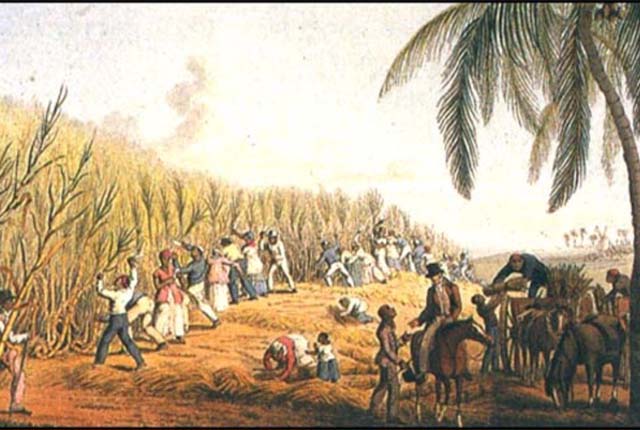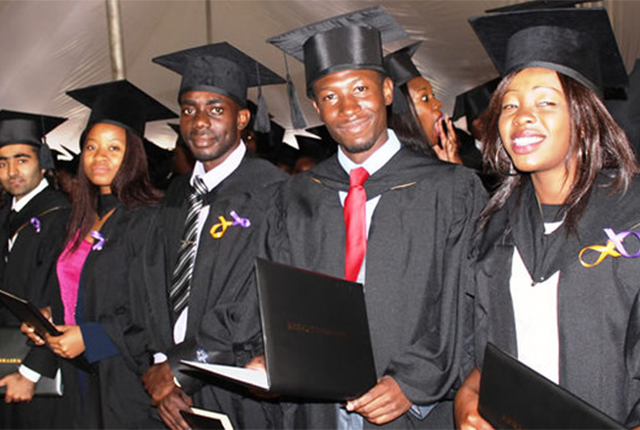Coming back home from Cuba


From the 1500s to the mid-1800s, about 12 million black slaves were shipped from Africa to the Western Hemisphere with nearly 2 million of these slaves dying on the way while about 65 percent were brought to Brazil, Cuba, Jamaica, Saint Domingue (now Haiti), and other sugar colonies
Dr Sekai Nzenza on Wednesday
One of our relatives, a cousin called Sam, has returned home after many years living in Cuba. He brought along with him his Cuban wife and three children. They drove from Harare to their village, a few kilometres from us. There was a lot of celebration to welcome Sam back after more than 25 years without ever coming home.My cousin Piri was at the homecoming ceremony, “Sis, vanhu vanonyepa kuti mukadzi was Sam murungu. Akasviba kutopfuura Sam. Kuzoti vana vacho, worse,” said my cousin Piri, surprised that Sam’s wife and the children were so black and not white or mixed.
My brother Sydney then explained that some people from Cuba are black like us.
Piri kept on shaking her head. Sydney said you can find Africans in Cuba and in Latin America because of what has happened to us over centuries.
“So, if Sam wanted to marry an African or a black person, why did he not come back and find one here?” Piri asked.
Piri is like that. She likes to believe that life should have remained the way it was like when we were growing up here.
When I was growing up in the village, long before I had travelled in a bus or a car, my grandmother, Mbuya VaMandirowesa, used to tell us to stay close to home. She told us scary stories of people who travelled to faraway places and got married to strangers from other ethnic groups. She said those people who left the village lost their roots and forgot who they were. They cut themselves off from the umbilical cord.
Mbuya used to remember with sadness, her son, Babamunini Nyika, who went to Malawi and did not come back for many years. He returned after independence, with nothing, musuitcase muribe chintu, with an empty suitcase. We saw him being taken around to see graves of those who departed in his absence. He knelt at Mbuya’s grave and sobbed, then at his father Sekuru Dickson’s grave, and at my father’s one until he had seen all the graves. Then he sat under the mutsamvi tree and mourned everyone who had died. People said Babamunini Nyika should have listened to his mother’s voice, kusina mai hakuendwi. He should also have taken Mbuya’s advice, that you only marry someone from a family that has been known by your family for generations. Rooranai vematongo.
We believed that faraway places could never be home and that there would be no one over there that looked like us. In our minds, the world was very small. We heard stories of people who left the village and worked in South Africa, or travelled to America, Europe, Canada and the UK. These people usually came back. In fact, after independence many people who had run away from the colonial oppression and racism of Rhodesia, returned home and we celebrated. We saw a new Zimbabwe and we were proud to be Africans. We were not in any hurry to leave or migrate to anywhere.
But we did not know that the world would change and become such a small place. You could be here this morning, get on a plane and wake up in America the very next morning. The old saying, “kusina mai hakuendwi,” took on a different meaning. We discovered that we could settle and find homes and new relatives or friends anywhere in the world.
Sometimes I agree with Piri that we should have stayed back here in the village, as long as there was plenty to eat. But that is not possible. I have learnt that our lives can never be static. Over the years, we have travelled and settled in faraway places, even Cuba.
There was plenty of information on the Internet about Cuba. Sydney googled to find out more about Africans in Cuba. This way, we could understand more about Sam’s wife, her people and her background. Sydney then started telling us more about the world of Africans and the how Africans got to Cuba and other faraway places. He said some Africans were brought to Cuba around 1511-1514 and those who later landed in Cuba came mostly from West Africa, going in land to Lake Chad and Central Africa.
On the east coast, Africans were captured and enslaved along Kenya, Tanzania and Zanzibar and in the south. The slave traders captured people from the borders of Angola, Zambia, Zimbabwe and Mozambique. This means people were taken from the African coasts and from the central regions as well. Maybe slave traders came as far as Zimbabwe. But we do not know that since there were no borders at all at that time. Once Africans landed in Cuba as slaves, their lives were very harsh as they were subjected to brutal treatment.
Sydney read somewhere where it said, Fernando Ortiz, a Cuban, wrote a lot about the Africans in Cuba. Ortiz was the first person to use the term “afrocubano”. Fernando Ortiz found some ancient historical documents describing Africans from Congo as the blackest and the “best built of all the black people, despite his . . . sturdy, lusciously shaped bodies quite too elegant for clothes. Both sexes display phenomenal grace in walking and in all their movements. The Congo has great perseverance, courage and dignity.”
African groups in Cuba were called the Bantu and they came from south of the equator and “the most influential in Cuba and all of Afro-America, were the Bakongo of northern Angola, southern Zaire, and southern Congo, and the Abudu from Angola and part of Zaire. Also, other Africans from the eastern areas south of the equator were the Makua.” Many Yoruba people were taken to Cuba especially during the years between 1820-1840. Then the Yoruba became the largest slave population in Cuba. Later on, Cuba quickly became a sugar growing colony as the number of Africans captured into slavery grew.
The slave trade then ended in the US in the 1860s and in Brazil in the 1850s, but in Cuba it lasted until the late 1870s. This means the black presence in Cuba pre-dates the arrival of African slaves to the US by more than a century and it was to last longer than slavery in America.
Africans in Cuba have maintained a unique African identity. During slavery, while plantation lords were busy enjoying the fruits of slave labour, the Africans developed black culture that is found in music, dance, the arts, literature, speech forms and spiritual practices. They held on to their African culture despite the hard and brutal realities of slavery. Cuban music is deeply influenced by the vibrant rhythms and melodies that Africans brought to Latin America from Africa. Musical style with an African identity is called mambo from Cuba.
Travelling through Cuba today, you will find that Africans are part of the diverse cultural mix of people. In the streets, you see black African women in bright dresses carrying fresh tropical fruit on their heads. You can be forgiven to think that these women have just arrived from one country in Africa. The women represent a symbol of slave resistance and the survival of African heritage in Cuba and also in Latin America.
Over the years, as the world becomes more global, we mix with other races and intermarry. We learn to live in faraway places and build new homes and develop new relationships. Back here in the village, we welcome Sam’s wife and celebrate her blackness, like she has just returned home.
Dr Sekai Nzenza is a writer and cultural critic.








Comments